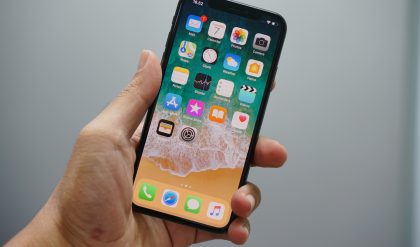
The practice of jailbreaking mobile devices has become more and more common in recent years. It has also become a subject of debate and curiosity.
When it comes to mobile applications, this market has also witnessed a dramatic increase of in-app purchases (IAPs) which has changed the way we interact with and pay for digital content. A common question that often arises around this topic is whether jailbreaking can make in-app purchases free of charge.
In this article, we dive into this topic and sort out whether or not it’s true that in-app purchases become free after you have jailbroken your device.
In-App Purchases: The Basics
In-app purchases (IAPs) are microtransactions that have become an integral part of our mobile app experience and frankly changed the way we engage with digital content.
An in-app purchase, or IAP, is a feature that allows users to buy additional content, features, or services within a mobile application. Whether you’re playing a game, using a productivity app, or exploring a social networking platform, IAPs enable you to enhance your experience by unlocking premium features and more within the application. In-app purchases can range from purchasing virtual currency, unlocking new levels or characters in a game, or even subscribing to premium content within a news app.
In-app purchases can generally be divided into two categories: consumable and non-consumable.
Consumable IAPs are items or features that can be used up and purchased repeatedly such as virtual coins or energy in games. Non-consumable IAPs, on the other hand, are one-time purchases that provide permanent access to content, for example removing ads or unlocking a full version of an app.
IAPs for app developers and the mobile industry
IAPs have revolutionized the way app developers can generate revenue. Instead of relying solely on upfront app purchases which was the norm earlier, developers can now offer their apps for free or at a reduced cost which helps increase the number of downloads. When users are engaged with the app, in-app purchases are one of the driving sources of revenue.
What this has done is make more apps available for a larger audience and also made it possible for smaller app developers to compete with industry giants.
IAPs and their role in app usage
From a consumer’s standpoint, IAPs offer both convenience and choice. They allow users to tailor their app experience to their preferences, paying only for what they find valuable and need. This flexibility has contributed to a growing focus on IAP apps rather than apps that you pay for up-front.
With that said, this freemium model can sometimes lead to a less enjoyable user experience. Some apps can have aggressive monetization tactics or paywalls which makes the app less enjoyable to use unless you pay.
The Myth of Free In-App Purchases
Now it’s time to discuss the topic of jailbreaking and its impact on in-app purchases. The idea that jailbreaking can magically render in-app purchases (IAPs) free of charge is often discussed among tech enthusiasts. But is this true or is it merely an urban legend?
The claim that jailbreaking can make IAPs free
The notion that jailbreaking can transform IAPs into cost-free apps centers around the idea of bypassing the restrictions that govern these purchases. Advocates of this practice argue that by gaining root access to a mobile device through jailbreaking, you can manipulate the app ecosystem in their favor. In theory, this can involve disabling or circumventing the mechanisms that authenticate and process IAPs, effectively rendering them free.
Jailbreaking normally involves exploiting vulnerabilities in a device’s operating system to gain root or administrator-level access. When this is achieved, users are able to install apps and make system-level changes that would otherwise be prohibited within the software framework of the device.
Ultimately, this allows people who jailbreak their devices to modify app files or install third-party tools that disrupt the communication between the app and the app store’s payment system. In doing so, they assert that they can trick the app into granting access to premium features or content without triggering a legitimate payment.
The Legal Perspective
When discussing jailbreaking and its purported ability to unlock free in-app purchases (IAPs), it’s imperative to navigate the complex web of legal implications surrounding this practice. Legal authorities and legislators worldwide have grappled with the question of whether jailbreaking devices and circumventing IAPs breach the boundaries of legality.
The legal landscape concerning IAPs and jailbreaking is generally not clear-cut. It varies from one jurisdiction to another and there are a lot of grey areas. Some countries permit jailbreaking under certain conditions while others categorically forbid it. Similarly, laws governing IAPs differ, and some nations advocate for strict regulation and consumer protection while others maintain a more relaxed approach.
In the United States, for instance, the Digital Millennium Copyright Act (DMCA) has provisions that impact jailbreaking. The Library of Congress has issued exemptions allowing jailbreaking for smartphones but not for tablets or gaming consoles. However, these exemptions may have caveats and are subject to revision.
High-profile cases and legal actions related to jailbreaking and IAPs
Over the years, several high-profile cases have gotten a lot of attention in the legal battle between jailbreaking and IAPs. These cases often revolve around questions of copyright infringement, intellectual property rights, and the circumvention of digital locks.
One notable case involved Apple Inc., which initially took a hard stance against jailbreaking. However, in a 2010 ruling by the U.S. Library of Congress, jailbreaking for smartphones was deemed legal under specific conditions, such as the exclusion of tablet devices. This decision marked a turning point in the ongoing debate.
The potential consequences of engaging in jailbreaking for free IAPs
The legal implications of jailbreaking for free IAPs can, as discussed above, vary widely depending on jurisdiction and context. In some cases, people jailbreak may face civil lawsuits or cease-and-desist orders, especially if their actions are deemed to violate copyright or intellectual property rights. Moreover, using jailbreaking to bypass IAPs may mean a breach of contract if they violate an app’s terms of service.
The Practical Implications
When talking about jailbreaking and free in-app purchases, it’s worth considering the practical consequences of free in-app purchases (IAPs) through jailbreaking. It might sound appealing to access premium content but there are risks and drawbacks that every user should be aware of.
The risks and drawbacks of attempting to obtain free IAPs through jailbreaking
- Security Vulnerabilities: Jailbreaking often involves exploiting vulnerabilities in a device’s operating system to gain elevated access. By doing so, users inadvertently expose their devices to security risks. These vulnerabilities can make the device susceptible to malware, hacking, and other malicious activities. Without the security safeguards provided by the manufacturer, your personal data and sensitive information may be at greater risk.
- Device Instability: Jailbreaking can lead to device instability and erratic behavior. The modifications made during the jailbreaking process can cause apps to crash, the device to freeze, or even result in the infamous “bricking” of the device, rendering it unusable. This instability can be frustrating and undermine the reliability of your device.
- Voiding Warranties: Most device manufacturers explicitly state that jailbreaking voids warranties. If your device experiences hardware or software issues, seeking support or repairs from the manufacturer may be challenging or impossible once your device is identified as jailbroken. This could potentially leave you with a costly repair bill.
- Loss of Official Updates: Jailbreaking often means forfeiting official software updates and security patches. Manufacturers regularly release updates to enhance device performance and security. By jailbreaking, you may find yourself stuck with an outdated operating system, which can hinder your device’s overall functionality.
- App Compatibility: Not all apps are designed to work on jailbroken devices. Attempting to use certain apps on a jailbroken device may result in compatibility issues, crashes, or the apps may refuse to function altogether. This can limit your app choices and reduce the overall utility of your device.
- Constant Maintenance: Jailbreaking is not a one-and-done process. Updates to your device’s operating system may break the jailbreak, requiring you to repeat the process. This constant need for maintenance can be time-consuming and frustrating.
Security vulnerabilities and malware risks associated with jailbroken devices
One of the most central practical concerns of jailbreaking is the increased risk of security vulnerabilities and malware. When you modify your device’s operating system to bypass security measures, it may increase the risk of malicious actors.
Hackers and cybercriminals may exploit these vulnerabilities to gain access to personal data, install malware, or engage in other illicit activities.
Alternatives to Jailbreaking
Now that we have discussed jailbreaking and its potential to unlock free in-app purchases, you may be wondering if there are alternative, lawful, and ethical ways to enhance your mobile app experience without circumventing payment systems. Let’s explore some of these alternatives:
Highlighting legal and ethical ways to enjoy apps without making IAPs
- Free Trials and Freemium Models: Many apps offer free trials or adopt a freemium model, providing basic functionality for free and offering premium features or content for a fee. Exploring these options allows you to assess an app’s value before committing to a purchase.
- Discounts and Promotions: App developers frequently offer discounts, promotions, or limited-time offers on IAPs. Keeping an eye on these opportunities can allow you to access premium content at a reduced cost.
- Supporting Developers: Recognize that app developers invest time, effort, and resources into creating the apps you enjoy. By purchasing IAPs, you not only gain access to premium content but also support the continued development and improvement of the apps you love.
- Loyalty Programs and Rewards: Some apps have loyalty programs or reward systems in place. By using the app regularly or engaging with certain features, you can earn credits or rewards that can be redeemed for premium content or discounts on IAPs.
- App Store Subscriptions: App stores, like the Apple App Store and Google Play, often offer subscription bundles that provide access to a variety of premium apps and services at a more cost-effective rate than purchasing each individually.
- Seeking Alternatives: If the cost of IAPs is a concern, consider exploring alternative apps or services that offer similar functionality at a lower price point or even for free. Competition within the app marketplace often leads to affordable and feature-rich alternatives.
- Providing Feedback: App developers value user feedback. If you have suggestions or encounter issues with an app’s pricing or IAPs, reach out to the developer. They may be receptive to user input and make adjustments to improve the user experience.
With these alternatives, you can abide by the law and contribute positively to the app ecosystem. Supporting developers and respecting the value of digital content helps sustain the growth and innovation of the mobile app industry.







